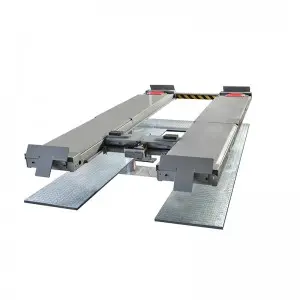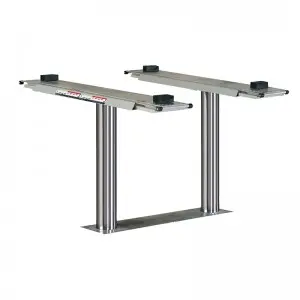Cylinders are cylindrical-shaped equipment that utilizes a piston-cylinder arrangement to generate mechanical force in one direction. Cylinders allow for linear motion when liquid or gas enters and is trapped within the cylinder, creating pressure as the piston is pushed. This simple yet effective technology has evolved to find its application is numerous industries worldwide.
Cylinders technology has found its place in different applications, including automotive, hydraulic lifts, heavy equipment, aerospace industries, and manufacturing. They are used for transportation, machinery, production lines, and heavy constructions. The various types of cylinders include hydraulic, pneumatic, telescopic, piston, rotary, hollow, and tandem. Each of these cylinders has different features suitable for diverse operations.
Hydraulic cylinders operate in a pressurized environment, where hydraulic fluid is used to power the piston. These cylinders are commonly found in construction equipment to move heavy loads. Pneumatic cylinders use compressed air to push or pull the piston. They are widely used in production lines, food packaging, and laboratory environments requiring controlled motion.

Exploring the Diverse Applications and Features of Cylinder Technology
Telescopic cylinders have a series of stacked cylinders, each with a different diameter, that allows for increased distance and force. These cylinders are commonly found in heavy construction equipment such as dump trucks, boom trucks, and scissor lifts. Piston cylinders are widely used in heavy machinery and equipment such as tractors, bulldozers, and excavators. Rotary cylinders are used for rotational motion, such as for indexing or positioning machinery.
Hollow cylinders, on the other hand, have an empty center, and they are commonly used in weights measurement and scientific experiments. Tandem cylinders are used when heavy loads need to be moved, and two or more cylinders work together to lift it.
The materials used to make cylinders, including cast iron, steel, stainless steel, and aluminum, affect the cylinder’s durability, performance, and cost. Steel is commonly used for heavy-duty and high-pressure applications such as construction and manufacturing. Aluminum is suitable for lightweight and low-pressure applications such as aerospace and automotive industries.

Exploring the Diverse Applications and Features of Cylinder Technology

Exploring the Diverse Applications and Features of Cylinder Technology
In conclusion, cylinders have diverse applications and features that make them widely used throughout different industries worldwide. The development of technological advancements in the manufacturing of cylinders has enabled the production of better cylinders and expanded their applications beyond their initial designs. The broad range of materials used in cylinder production has allowed for customization and made cylinders adaptable to various operations. The cylinder’s evolution and its ability to make work easier and efficient have made it an indispensable tool for manufacturing and construction industries.New Engery Vehicle Battery Lift



